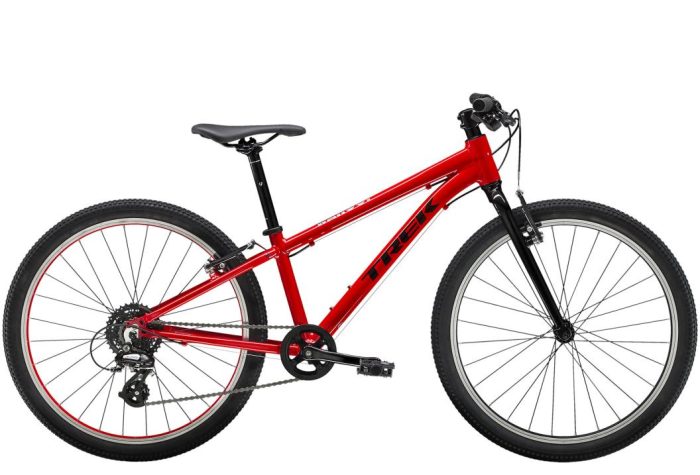How To Install Bicycle Front Brakes
They need to have all the necessary components and add-ons in order to enjoy an amazing biking experience. A bike must have brakes, not just the rear ones but also the front ones. With all the brakes installed, you would have a fantastic and secure riding experience, which is why this guide is available. We’ll demonstrate how to put front brakes on a bike here, along with some other helpful details.
Mechanical System:
Expert and skilled riders understand their entire point, but some recreational riders may be following in their footsteps, which could put them in peril. Although there are many debates on the sensitive subject of brakes, we always place a premium on our riders’ comfort and safety, which is why we’ve created this guide for you.
There are many options for bicycle brakes, but the cantilever and linear-pull braking systems are two of the simplest to set up on a road bike. Both are mechanical systems, requiring the operator to pull a wire connecting to the brake assembly with a lever in order to operate the device. On the bicycle’s front fork, there is a pivot point where these two systems mount. Cantilever brakes are not commonly used on bicycles with suspension, but linear-pull brakes are.
The topic of installing the front brakes will be covered today. Let’s start by talking about the equipment we will require for the entire procedure.
Tools Needed:
The Equipment Required to Replace Brakes
- Start With the Right Protection.
- Brake Pads and Rotors.
- Jack and Jack Stand.
- Lug Nut Wrench.
- Brake Caliper Piston Tool.
- Brake Bleeder Wrench.
- Allen Wrench Set.
Types Of Brakes:
Additionally, there are other brake kinds that you should be aware of:
Brakes, disc
Calculator Brakes
Brakes using Cantilever
Soon, we’ll talk about these many brake types, but first, let’s talk about installation.
Installation Of Bicycle Front Brakes:
There aren’t many alternatives available when installing bicycle brakes; typically, there are only two.
These two types of brakes are:
- Systems for linear-pull brakes
- Brakes using Cantilever
Both of these braking systems are mechanical, which means that in order to brake, you must pull a lever that is fastened to some wires. These two mechanical braking devices will be mounted on the bicycle’s front fork, at its pivot point. If your bicycle has suspension, you ought to use linear-pull brakes; otherwise, you ought to use cantilever brakes.
Start with the lever. If you already have a lever mechanism, go ahead and go to step 2, but if not, follow these instructions for a thorough installation.
Lever System Installation:
Simply follow the steps listed for installation of the brake assembly and brake levers. We’ll cover how to adjust various types of brakes in addition to installing the lever.
- Remove the grip from the handlebar to begin installing the lever on the right handlebar. The lever on the right handlebar must now be slid; it cannot be curled in any way. Keep this in mind while you do so.
- Tighten the screw on the mounting bracket to keep the lever in place. The grip can be replaced after this step is finished.
- Pull the brake lever while guiding the brake cables through the lever’s groove. The cable must then be inserted into the adjustment barrel before you can move on.
Cantilever Brakes Installation
Cantilever brakes are quite outdated; thus, in order to install them, adhere to the following instructions.
- To start, the brake assembly unit needs to be fastened to the bike’s front fork. The brake shoes should now be placed very closely to the front wheel’s rims. The cable anchor bolt would have a nut connected; unscrew it, and then set it aside.
- The wire at the end of the brake cable must be located, and once it is, it must be threaded through the adjustment barrel and the hole in the cable anchor bolt. Tighten the cable anchor bolt after taking up the extra slack in the cable.
- At this point, you must test the brakes. The front brakes should operate without a problem. Pull the lever to test them. End up making the lever is only lifted when the brake pad comes into contact with the rim.
Linear-Pull Brakes Installation:
How to Install They may be the simplest to use and install. Here are the procedures for hassle-free installation.
- The brake pads must first be placed against the front rim, then attach the assembly unit, starting here as you did with the cantilever brakes. The bike assembly unit should then receive the brake cable.
- Locate the wire that is at the brake cable’s termination. You must now slightly tighten the cable anchor bolt after passing the wire through it. The cable anchor bolt must first be slightly loosened. Verify that the brake pads are in fact making contact with the wheel rim by beginning to lift the brake lever.
- Pull the wire through the cable anchor colt while maintaining pressure on the brake pedal. After tightening the bolt, release it. By quickly drawing and releasing the brake lever, you must now extend the brake cable. Finally, pull the wire once more before tightening the anchor bolt. You’ve finished!
Checklist:
- Ensure that the cable is being pulled while the calliper is in motion. To watch the calliper closing and opening for this, squeeze the handle. Alternatively, have someone else adjust while you examine the alignment.
- When brake pads are neglected, they can become so worn out that they lose their effectiveness. So, keep an eye on your brake pads.
- Make sure you schedule the servicing if the brake handles do not move when you squeeze them. The wire will remain stuck in the housing if you don’t, and friction could cause it to break. the cables should be oiled.
- You should examine the security of the cable clamps on the underside of your brake levers. If not, lubricating the pivot pin on the lever handle will improve the outcome.
- The oldest of the group, cantilever brakes are also the most difficult to repair or adjust. Do not be deceived by their apparent simplicity; fixing them requires a great deal of skill. If you don’t take care when fixing them, the brake pads could get damaged and there might be brake noise. For this reason, you must put them up perfectly!
Conclusion
Without brakes, bicycles aren’t complete; without front brakes, you can’t enjoy the comfort. The cyclist is protected from accidents, especially deadly ones, thanks to these brakes. You merely need to have the required equipment and know the right procedures to follow in order to install brakes correctly.
Bicycle Front Brakes FAQs:
Which bike’s front brake is used?
The front brake is often operated by a lever on the left side of the handlebar, whereas the rear brake is typically operated by a lever on the right side.
How much does it cost to fix a bike’s brakes?
If you have a non-standard bike frame, the cost of expert bike brake repair may be greater, ranging from $80 to $150. It will cost you between $25 and $35 to repair your own bicycle brakes.
Should you depress the brake while shifting gears?
In order for the chain to advance from one gear to the next while you are changing, you must continue pedalling. The chain is pushing on the gear teeth when you are cycling while in a certain gear.
Which bicycle gear is the fastest?
You can accelerate more quickly by using a lower, simpler gear that has a smaller chain ring up front and a larger cog in the back. This facilitates starting from a halt or climbing a steep incline.
Are V brakes superior to disc brakes?
V brakes do not put stress on the hubs and spokes, unlike disc brakes, which quickly heat up and transfer heat to them. Therefore, the spokes and hub of bicycles with V brakes tend to have a longer life because the wheel and its components do not heat up.
Are the brake cables on bicycles uniform?
While the housings for gear and brake inner cables are essentially the same, brake cables employ a traditional “helical” housing that is made of a tightly wound helix of steel wire that is coated on both the inside and exterior with plastic.
Should we apply both side brakes?
Because it is much simpler to slide than when your bike is straight and erect, all braking must be gentle and smooth. Utilizing both brakes lessens the chance that you will fall off due to a wheel slipping.
Do bicycles require a front brake?
Although a fixed wheel counts as a rear brake, a front calliper is still required. On a bicycle, a front brake is required, he declared. There won’t be much weight on the back wheel if you’re trying to stop a bicycle or any other vehicle rapidly.
Contact Us
If you have any suggestions or advise, please feel free to reach us via our Contact Us here.
Our articles are developed after considerable research and studies online and also including seeking informational experience based tips from professional rides. Key sources of information are interviews, google search and youtube.



